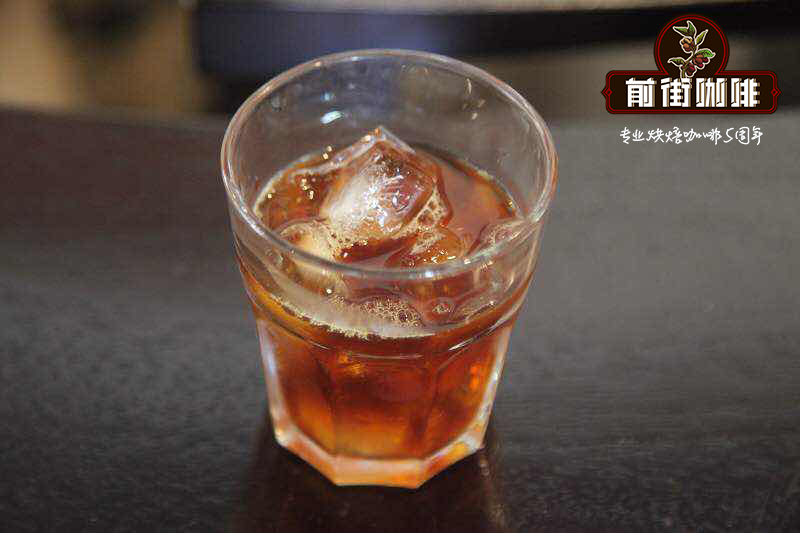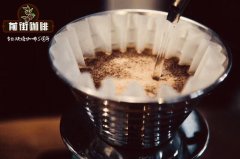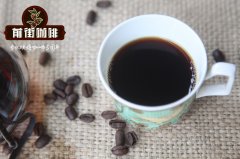Sumatran hand-made coffee flavor Sumatran hand-made coffee is good? how about Indonesian coffee

Professional coffee knowledge exchange more coffee bean information please follow the coffee workshop (Wechat official account cafe_style)
Mantenin in Sumatra is famous for its thick, almost syrup-like body and low acidity. This combination creates a smooth, velvety cup of coffee, but it is obvious. A powerful aroma. The palate is direct, solid and nutty.
Our current plot is Mantenin Fair Trade & Organic in Sumatra. The processing plant for coffee beans is located in Tarken, Sumatra, Indonesia; it is the only company in North Sumatra that produces high-quality washed and unwashed coffee. This coffee is organically certified by SKAL, bringing organic Sumatran Arabica coffee to market; this is certified Fairtrade.
Farms range in size from one acre to four acres and are filled with fruits and vegetables, making farmers more self-sufficient in times of turmoil. Farmers can also send their beans directly to the factory, eliminating middlemen, thus offering higher prices for their valuable products and entering the export market directly. Coffee beans grow at an altitude of 3200 to 6000 feet. Due to the high price of imported fertilizers, most fertilizers are carried out with organic matter. This first-class Sumatran manning is double-picked.
This world-class coffee is grown in the Malay Islands near Padang, Indonesia, where it is unfermented in a natural way.
Cup-shaped features: simple, nutty, supple taste. A sturdy remarkable but not arrogant body. Sumatra Manning coffee is syrup-shaped and tastes of chocolate and brown sugar. They are famous for their smooth and mellow taste. They have both simple taste and complex flavor. These coffee beans are legends of the Sumatran coffee world. They have a rich history and rich flavor.
Small batches of roasting to ensure uniform, dark and oily-small batches of roasting are more expensive, but this roasting technique ensures that each batch of coffee is of high quality and is roasted evenly to achieve the desired roasting effect, rather than mass production. This process extracts the best flavor from each batch. Small batches of roasting lead to higher quality standards throughout the process: from choosing the right beans, to choosing the right charge and cooling, to slowly baking each batch to perfection.
END
Important Notice :
前街咖啡 FrontStreet Coffee has moved to new addredd:
FrontStreet Coffee Address: 315,Donghua East Road,GuangZhou
Tel:020 38364473
- Prev

Which kind of coffee is best to drink in Indonesia? Manning coffee has a rich dark chocolate herbal flavor.
Professional coffee knowledge exchange more coffee bean information please follow the coffee workshop (Wechat official account cafe_style) front street-Indonesian coffee producing areas, Manning coffee characteristics of Indonesia Indonesia is one of the first countries to carry out coffee commercial cultivation, only later than Yemen. The country is made up of a large number of islands, each interpreting Indonesia in its own way
- Next

Does Indonesian hand-brewed coffee taste good? Indonesian hand-brewed coffee flavor description
For more information on coffee beans, please follow the coffee workshop (Wechat official account cafe_style) Sumatra Mandheling Coffee is famous for its complex, strong and down-to-earth flavor. It is a kind of coffee with a mellow taste and even a syrup flavor. Sumatra Manning Coffee is considered to be one of the richest coffee in the world.
Related
- Beginners will see the "Coffee pull flower" guide!
- What is the difference between ice blog purified milk and ordinary milk coffee?
- Why is the Philippines the largest producer of crops in Liberia?
- For coffee extraction, should the fine powder be retained?
- How does extracted espresso fill pressed powder? How much strength does it take to press the powder?
- How to make jasmine cold extract coffee? Is the jasmine + latte good?
- Will this little toy really make the coffee taste better? How does Lily Drip affect coffee extraction?
- Will the action of slapping the filter cup also affect coffee extraction?
- What's the difference between powder-to-water ratio and powder-to-liquid ratio?
- What is the Ethiopian local species? What does it have to do with Heirloom native species?

